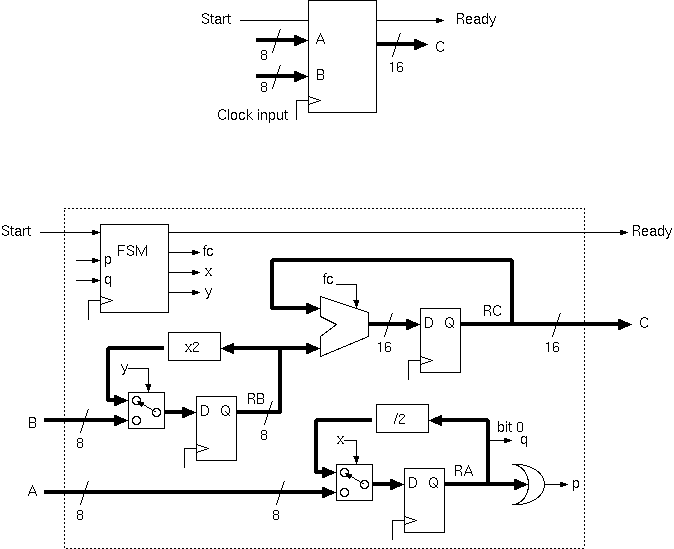
Multipliers are typically fully-pipelined and so the only structural hazard they present is that they can only complete one operation per clock cycle. Bit this was goes busy for a variable latency and can be said to create a hazard (to the commencement of fresh multiplies) while it is busy.

Behavioural algorithm:
while (1)
{
wait (Start);
RA=A; RB=B; RC=0;
while(RA>0)
{
if odd(RA) RC=RC+RB;
RA = RA >> 1;
RB = RB << 1;
}
Ready = 1;
wait(!Start);
Ready = 0;
}
(Either HLS or hand coding can
give the illustrated datapath
and sequencer structure:)
|  |
It is certainly not fully-pipelined, it goes busy for many cycles, depening on the log of the A input. The illustration shows a common design pattern consisting of a datapath and a sequencer. Booth's algorithm (see additional material) is faster, still using one adder but needing half the clock ticks.
| 40: (C) 2008-18, DJ Greaves, University of Cambridge, Computer Laboratory. | Flash Player Upgrade Needed |